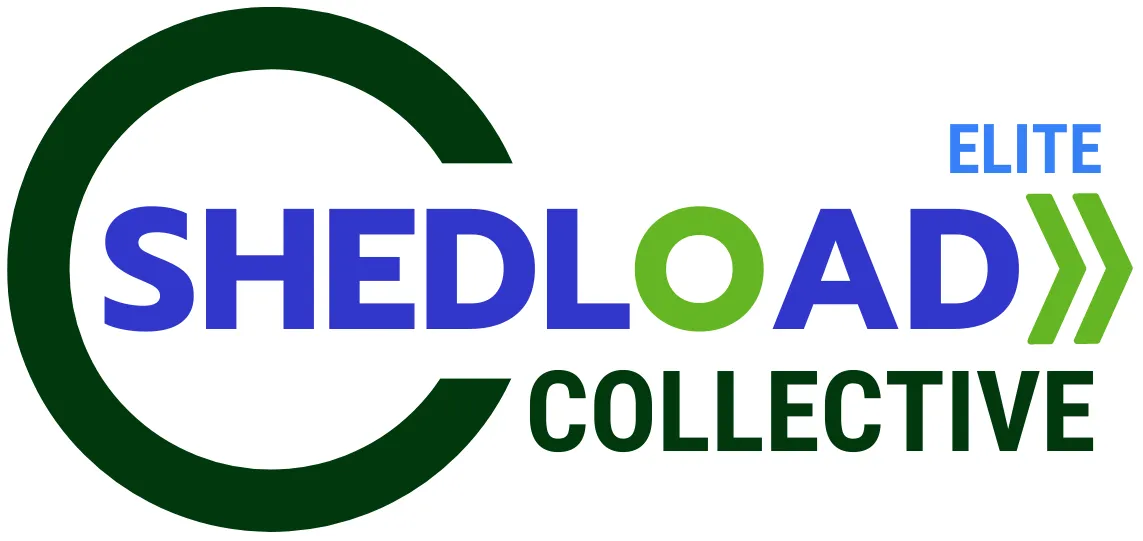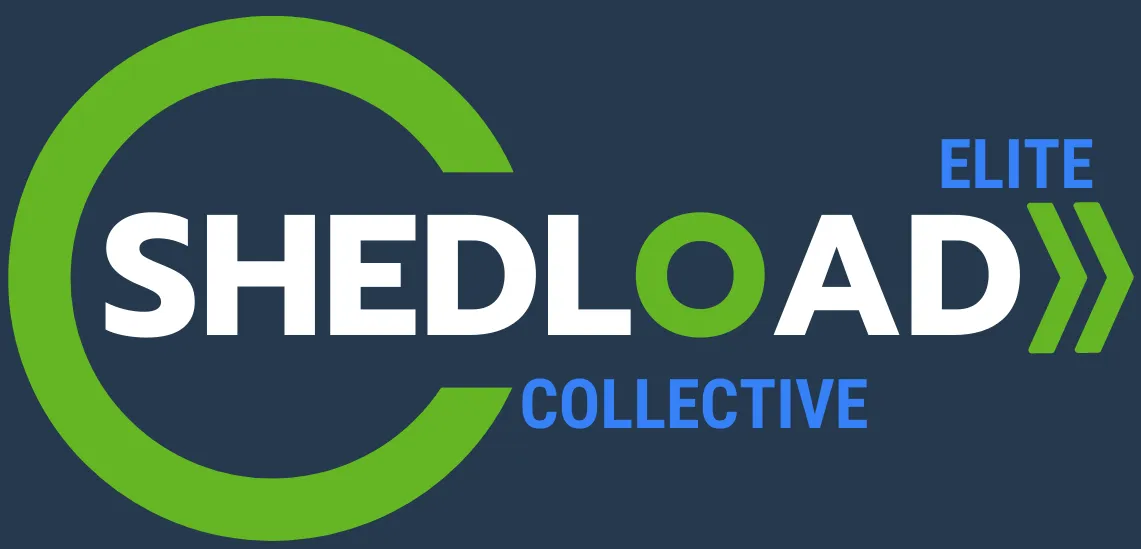
How Low Road Capitalism Will Kill Your Small Business – And How Profit Acceleration Principles & Marginal Utility Theory Will Save You
"Low Road Capitalism" (or simply "Low Road" strategies) is a term often used to describe business practices that prioritize short-term cost-cutting and immediate financial gain, often at the expense of long-term sustainability, employee well-being, environmental responsibility, or customer value.
It's characterized by:
Cost Minimization at All Costs: Aggressive cost-cutting, often leading to:
Low Wages and Benefits: Paying employees the minimum possible, with few benefits.
Poor Working Conditions: Neglecting employee safety, comfort, or development.
High Turnover: A consequence of low wages and poor conditions, leading to a constant need for new, untrained staff.
Minimal Investment in Human Capital: Little to no investment in employee training, development, or retention.
Focus on Price Competition: Competing primarily on being the cheapest, rather than on quality, innovation, or customer service.
Externalizing Costs: Shifting costs onto society or the environment (e.g., pollution, relying on public services for low-paid workers).
Short-Term Orientation: Prioritizing quarterly profits over long-term strategic growth, brand building, or customer loyalty.
Transactional Relationships: Viewing employees, suppliers, and even customers primarily as interchangeable units in a transaction, rather than as valued partners.
In contrast, "High Road Capitalism" (or "High Road" strategies) emphasizes long-term value creation through investing in skilled labor, quality products, innovation, customer relationships, and sustainable practices, believing that these lead to superior and more resilient profitability.
"Low Road Capitalism," characterized by an intense focus on short-term cost minimization and maximizing immediate profits, often leads to unsustainable practices that can cause small businesses to fail in the long run. While it might offer temporary competitive advantages through lower prices, it erodes the very foundations of a resilient business.
Here are 10 ways "Low Road Capitalism" can cause small businesses to eventually fail:
High Employee Turnover and Decreased Productivity:
The Problem: Prioritizing low wages and minimal benefits leads to frequent employee departures. Constant recruitment and training consume resources.
Failure Point: A revolving door of staff means a lack of institutional knowledge, poor consistency in service/product delivery, and demotivated employees who are less productive and less invested in the business's success. This directly increases operational costs (recruitment, training, errors) and decreases efficiency.
Compromised Product/Service Quality:
The Problem: Cutting corners on materials, production processes, or service time to reduce costs.
Failure Point: A noticeable decline in quality leads to customer dissatisfaction, increased returns/complaints, negative reviews, and a damaged brand reputation. Customers will eventually leave, even if prices are low, because the perceived value (marginal utility) drops below an acceptable threshold.
Damaged Brand Reputation and Trust:
The Problem: Negative employee experiences (publicly shared), poor customer service due to understaffing/lack of training, and declining product quality all contribute to a tarnished brand image.
Failure Point: In today's interconnected world, a bad reputation spreads rapidly through online reviews and social media. This deters new customers, reduces customer loyalty, and makes it impossible to compete on anything other than unsustainable low prices.
Inability to Innovate and Adapt:
The Problem: A singular focus on cutting current costs means no budget or incentive for research and development, market analysis, or investing in new technologies.
Failure Point: The market constantly evolves. Businesses stuck in a "low road" mindset cannot adapt to changing customer demands, new technologies, or competitive pressures. They become obsolete, unable to offer new features or experiences that provide high marginal utility to modern consumers.
Weakened Customer Loyalty and High Churn:
The Problem: Viewing customers as transactional units, offering minimal customer service, and providing inconsistent quality.
Failure Point: Customers faced with poor service, unreliable products, or feeling unvalued will easily switch to competitors. Acquiring new customers is always more expensive than retaining existing ones, so high churn rates are a direct path to financial unsustainability.
Erosion of Supplier Relationships:
The Problem: Constantly squeezing suppliers for lower prices, demanding unfavorable terms, and switching frequently to the cheapest option.
Failure Point: Suppliers may provide lower quality, offer less favorable terms, or simply refuse to work with the business. This can lead to unreliable supply chains, inconsistent quality of inputs, increased delivery delays, and higher long-term costs when better suppliers refuse to engage.
Legal and Regulatory Risks:
The Problem: Cutting corners on labor laws (wage theft, safety regulations), environmental compliance, or product safety standards to save money.
Failure Point: These practices can lead to lawsuits, hefty fines, forced shutdowns, and severe reputational damage. The short-term savings are dwarfed by the potential legal and regulatory consequences.
Stifled Growth and Market Stagnation:
The Problem: An intense focus on cutting costs often means deprioritizing investments in marketing, sales, expansion, or talent development that are essential for growth.
Failure Point: Without investment, a small business cannot expand its customer base, enter new markets, or increase its market share. It becomes vulnerable to more strategically focused competitors who are building for long-term growth.
Difficulty Attracting Quality Talent:
The Problem: Known for low wages, poor benefits, and high turnover, a "low road" business struggles to attract skilled and motivated employees.
Failure Point: Without quality talent, a business cannot innovate, deliver excellent customer service, or execute complex strategies. It's caught in a cycle where it can only hire less capable staff, further degrading product/service quality and efficiency.
Lack of Resilience to Economic Shocks:
The Problem: By operating on razor-thin margins and neglecting investments in relationships, innovation, and employee skills, the business has no buffer.
Failure Point: When economic downturns, supply chain disruptions, or new intense competition hit, "low road" businesses lack the loyal customer base, engaged workforce, or financial reserves to adapt or withstand the pressure. They are the first to fail under adverse conditions because their foundations are weak.
How Profit Acceleration Principles & Marginal Utility Theory Save Your Small Business from Low Road Capitalism
Profit Acceleration Principles and Marginal Utility Theory provide a strategic antidote to the "race to the bottom" mentality of Low Road Capitalism and provide the framework for building a "High Road" business – one that explicitly counters the destructive tendencies of the "Low Road" by focusing on long-term value creation and customer delight.
. They shift the focus from merely cutting costs and selling cheap to intelligently increasing value and optimizing every aspect of the business for sustainable, compounding profitability.
1. Counteracting High Employee Turnover & Decreased Productivity
Low Road Pitfall: High turnover due to low wages/benefits, leading to inefficiency and knowledge loss.
Profit Acceleration & Marginal Utility Solution:
Profit Acceleration Principle: By increasing overall business profitability (through optimized pricing, upsells, etc.), there's more profit available to invest in employees.
Marginal Utility Theory: Investing in fair wages, good benefits, and a positive work environment increases the marginal utility employees derive from their jobs beyond just the basic paycheck. This fosters loyalty and motivation.
How it Saves Your Business: You retain talent, reduce recruitment/training costs (saving 15-20% of a salary per turnover), improve institutional knowledge, and boost employee morale and productivity. Loyal, engaged employees are significantly more productive, delivering higher quality service and contributing to overall revenue growth.
2. Counteracting Compromised Product/Service Quality
Low Road Pitfall: Cutting corners on quality to save money, leading to inferior products/services.
Profit Acceleration & Marginal Utility Solution:
Profit Acceleration Principle: Focuses on optimizing profit levers like Average Transaction Value (ATV) and increasing prices based on value, rather than reducing quality. It quantifies the ROI of quality.
Marginal Utility Theory: Recognizes that higher quality provides significantly higher marginal utility to customers, justifying a premium price and fostering loyalty. It shifts the perception from "cheap" to "valuable."
How it Saves Your Business: You deliver superior products/services, reducing returns/complaints (e.g., decrease returns by 5%, saving $1,000s monthly in processing and reshipment costs), building a reputation for excellence, and commanding higher prices. This leads to higher margins and stronger customer satisfaction.
3. Counteracting Damaged Brand Reputation and Trust
Low Road Pitfall: Negative reviews and word-of-mouth due to poor practices, destroying brand trust.
Profit Acceleration & Marginal Utility Solution:
Profit Acceleration Principle: Prioritizes strategies like customer longevity, proactive problem-solving, and managing digital footprints, which are inherently brand-building. It quantifies the long-term profit loss from a damaged reputation.
Marginal Utility Theory: A trusted brand delivers immense marginal utility to customers beyond the functional aspects of the product. Trust reduces perceived risk, making purchase decisions easier and increasing willingness to pay.
How it Saves Your Business: By consistently delivering value and service, you build a strong, positive brand reputation (e.g., increase positive online reviews by 10%, leading to 5% more new customers). This attracts more valuable leads, improves conversion rates, and creates advocates who market for you for free.
4. Counteracting Inability to Innovate and Adapt
Low Road Pitfall: No investment in R&D or market analysis, leading to obsolescence.
Profit Acceleration & Marginal Utility Solution:
Profit Acceleration Principle: Frees up capital through efficiency gains and increased profit margins, allowing for strategic investment in innovation and market research. It quantifies the ROI of new products/services.
Marginal Utility Theory: Identifies unmet customer needs and desires that, when addressed through innovation, provide exceptionally high marginal utility, creating new markets or differentiation.
How it Saves Your Business: You remain competitive and relevant (e.g., launch 2 new high-margin products annually, increasing revenue by 10-15%). You can adapt to market changes, leverage new technologies, and consistently offer fresh value that keeps customers engaged and attracts new ones.
5. Counteracting Weakened Customer Loyalty and High Churn
Low Road Pitfall: High customer churn due to transactional approach and poor service.
Profit Acceleration & Marginal Utility Solution:
Profit Acceleration Principle: Explicitly prioritizes increasing customer longevity and CLTV, recognizing that retaining customers is far more profitable than constantly acquiring new ones.
Marginal Utility Theory: Focuses on continuously delivering renewed marginal utility through exceptional service, personalized communication, and ongoing value, making customers want to stay.
How it Saves Your Business: You build a loyal customer base (e.g., reduce churn by 5-10%, leading to 10-20% higher CLTV). This ensures stable, predictable revenue, reduces Customer Acquisition Cost (CAC), and generates valuable referrals, creating a compounding profit effect.
6. Counteracting Erosion of Supplier Relationships
Low Road Pitfall: Constantly squeezing suppliers leads to unreliable supply and lower quality inputs.
Profit Acceleration & Marginal Utility Solution:
Profit Acceleration Principle: Drives profitability through various levers, allowing for fair and sustainable supplier relationships. It quantifies the long-term cost of unreliable supply.
Marginal Utility Theory: Recognizes the high marginal utility of reliable supply, consistent quality inputs, and strong partnerships in ensuring seamless operations and customer satisfaction.
How it Saves Your Business: You build strong, collaborative supplier relationships (e.g., improve on-time delivery from suppliers by 15%, reducing production delays by 10%). This ensures consistent quality, better terms, and reliable supply chains, directly protecting your operations and customer commitments.
7. Counteracting Legal and Regulatory Risks
Low Road Pitfall: Cutting corners on compliance and ethics to save money.
Profit Acceleration & Marginal Utility Solution:
Profit Acceleration Principle: Emphasizes long-term sustainable growth and risk mitigation. It quantifies the devastating financial impact of legal penalties, fines, and reputational damage.
Marginal Utility Theory: Operating ethically and compliantly provides significant marginal utility in terms of consumer trust, employee morale, and long-term brand reputation.
How it Saves Your Business: You operate ethically and compliantly (e.g., reduce compliance-related fines/penalties by 100%). This protects your business from costly lawsuits, regulatory investigations, and severe reputational damage that could lead to outright failure.
8. Counteracting Stifled Growth and Market Stagnation
Low Road Pitfall: Deprioritizing investments needed for growth, leading to stagnation.
Profit Acceleration & Marginal Utility Solution:
Profit Acceleration Principle: Systematically identifies and prioritizes the most profitable growth levers (e.g., optimizing acquisition, upselling, new market entry) and generates the capital to fund them.
Marginal Utility Theory: Guides the identification of high-value growth areas where your products/services can deliver exceptionally high marginal utility to new customer segments.
How it Saves Your Business: You achieve strategic, profitable growth (e.g., increase market share by 5-10% annually). This ensures you're constantly expanding your reach, staying competitive, and building a larger, more resilient business base.
9. Counteracting Difficulty Attracting Quality Talent
Low Road Pitfall: A poor reputation for employee treatment, making it hard to attract skilled workers.
Profit Acceleration & Marginal Utility Solution:
Profit Acceleration Principle: Generates the financial health to offer competitive compensation and foster a positive work environment, which are essential for attracting top talent.
Marginal Utility Theory: Investing in a positive company culture, employee development, and recognition provides substantial marginal utility to potential and current employees, making your business a desirable place to work.
How it Saves Your Business: You attract and retain high-quality talent (e.g., reduce recruitment costs by 20% by building an attractive employer brand). Talented employees are innovators, problem-solvers, and superior performers who directly contribute to business success.
10. Counteracting Lack of Resilience to Economic Shocks
Low Road Pitfall: Operating on thin margins with weak foundations, leading to collapse during downturns.
Profit Acceleration & Marginal Utility Solution:
Profit Acceleration Principle: Builds financial reserves, diversifies revenue streams, and strengthens customer relationships, creating a robust financial and operational buffer.
Marginal Utility Theory: Businesses that consistently deliver high marginal utility and build strong trust are more resilient during economic shifts, as customers prioritize value over just low price.
How it Saves Your Business: You build a resilient, adaptable business (e.g., increase cash reserves by 15% within a year, reduce vulnerability to single market fluctuations by 20%). This allows you to weather economic downturns, adapt quickly to change, and even capitalize on opportunities that arise when weaker competitors fail.
In summary, the "Low Road" often leads to a race to the bottom, where businesses compete solely on who can offer the lowest price by squeezing every possible cost, potentially leading to a detrimental cycle for workers, customers, and the broader economy.
While "Low Road Capitalism" aims for short-term profit, it systematically dismantles the very pillars that sustain a small business: customer loyalty, employee quality, brand reputation, and the ability to adapt and innovate. This makes its ultimate failure almost inevitable.
Focusing on Profit Acceleration Principles and Marginal Utility Theory is about playing the "High Road" game. It's an integrated strategy that builds a strong, sustainable, and highly profitable business by valuing customers, employees, quality, and long-term relationships, rather than sacrificing them for fleeting, low-road gains. Your Profit Acceleration Software™ provides the data and insights to make this "High Road" strategy not just aspirational, but measurable and achievable.
Need help putting this into action? Find us anytime. We’re happy to help.
Do you want to try a Simulator Version of our Profit Acceleration Software? Take it for a free Test Spin and see where you’re losing money.
Or, simply access our Free Training with no forms to fill out!
Are you interested in learning more about our different coaching offerings? Feel free to contact us anytime and check out our wide range of services to support whatever short or long term needs you’re currently facing. By leveraging the Profit Acceleration Software™ (PAS), The Elite Shedload Collective offers a unique advantage. We don't just provide qualitative Coaching and support; we bring data-driven precision with quantitative financial proof to every aspect of your business, ensuring that your efforts to solve these problems translate directly into measurable financial gains and sustained growth.



